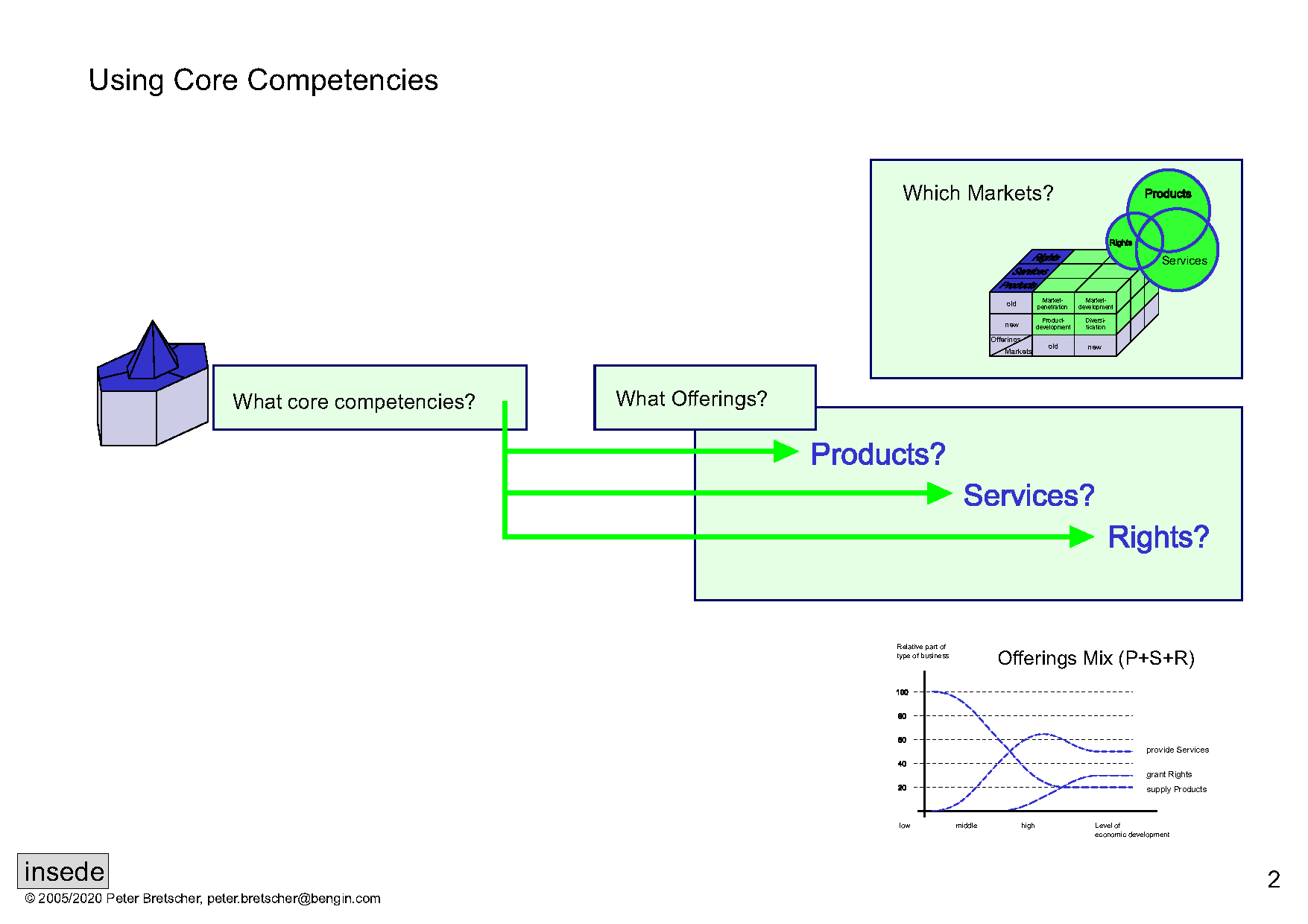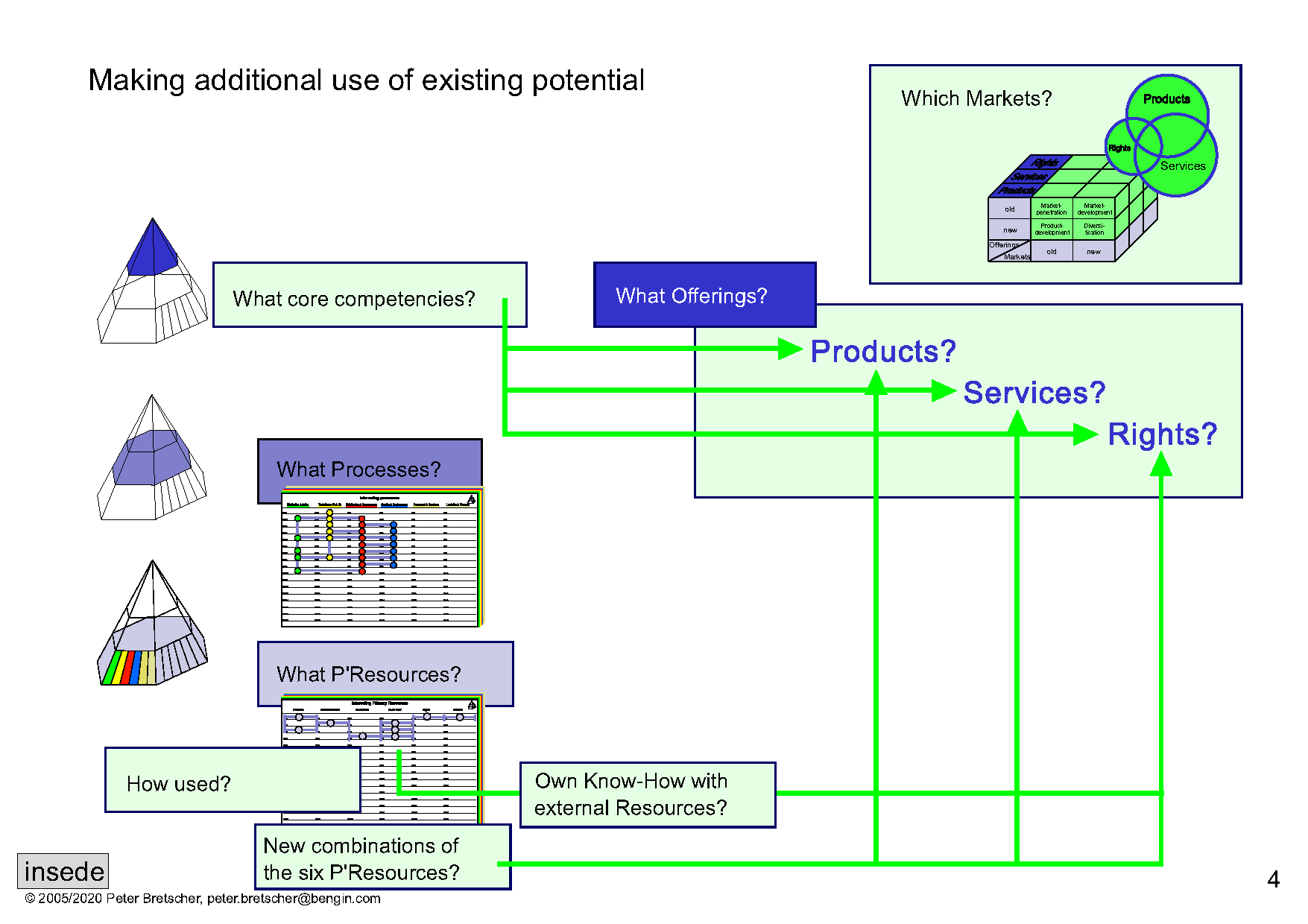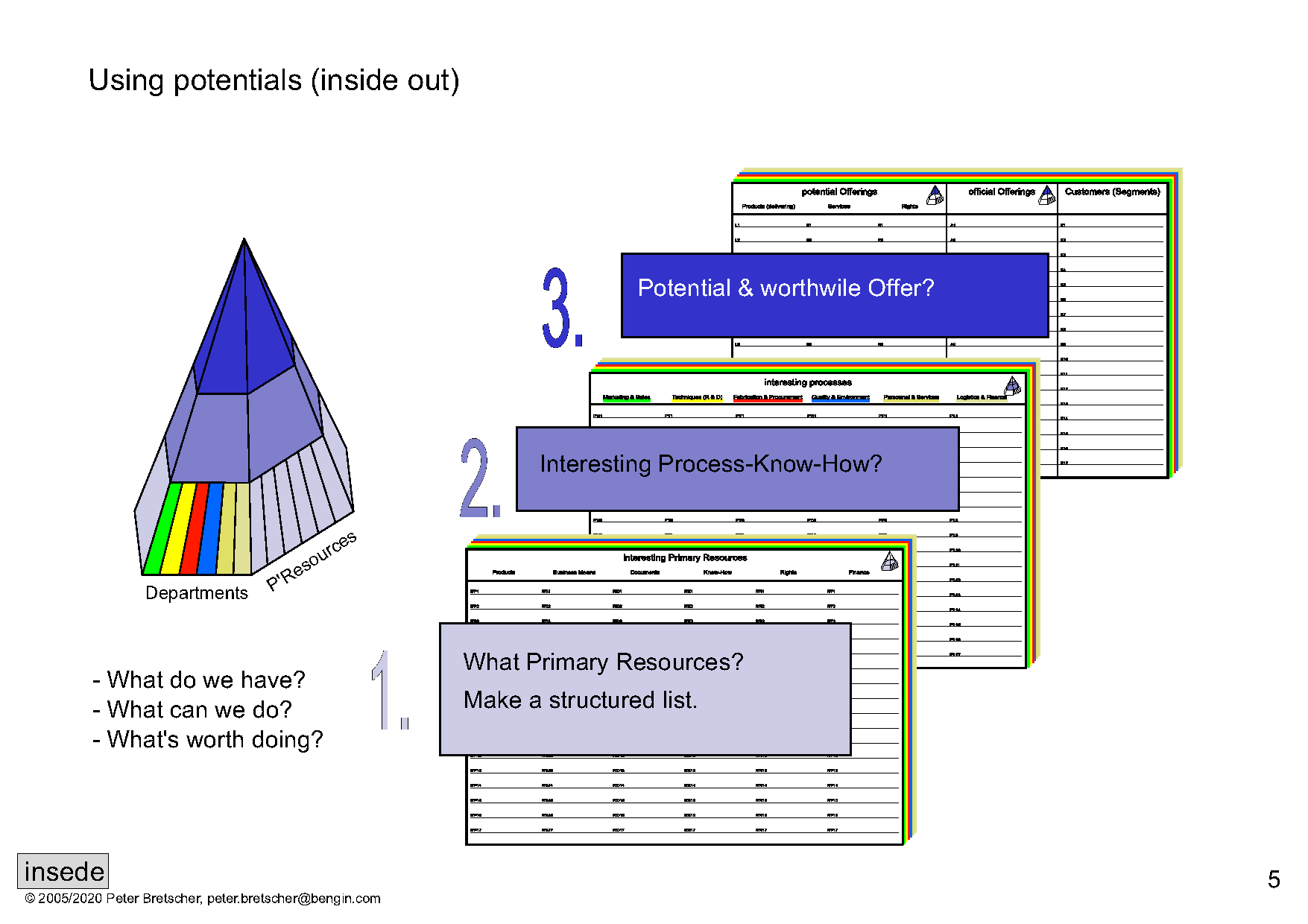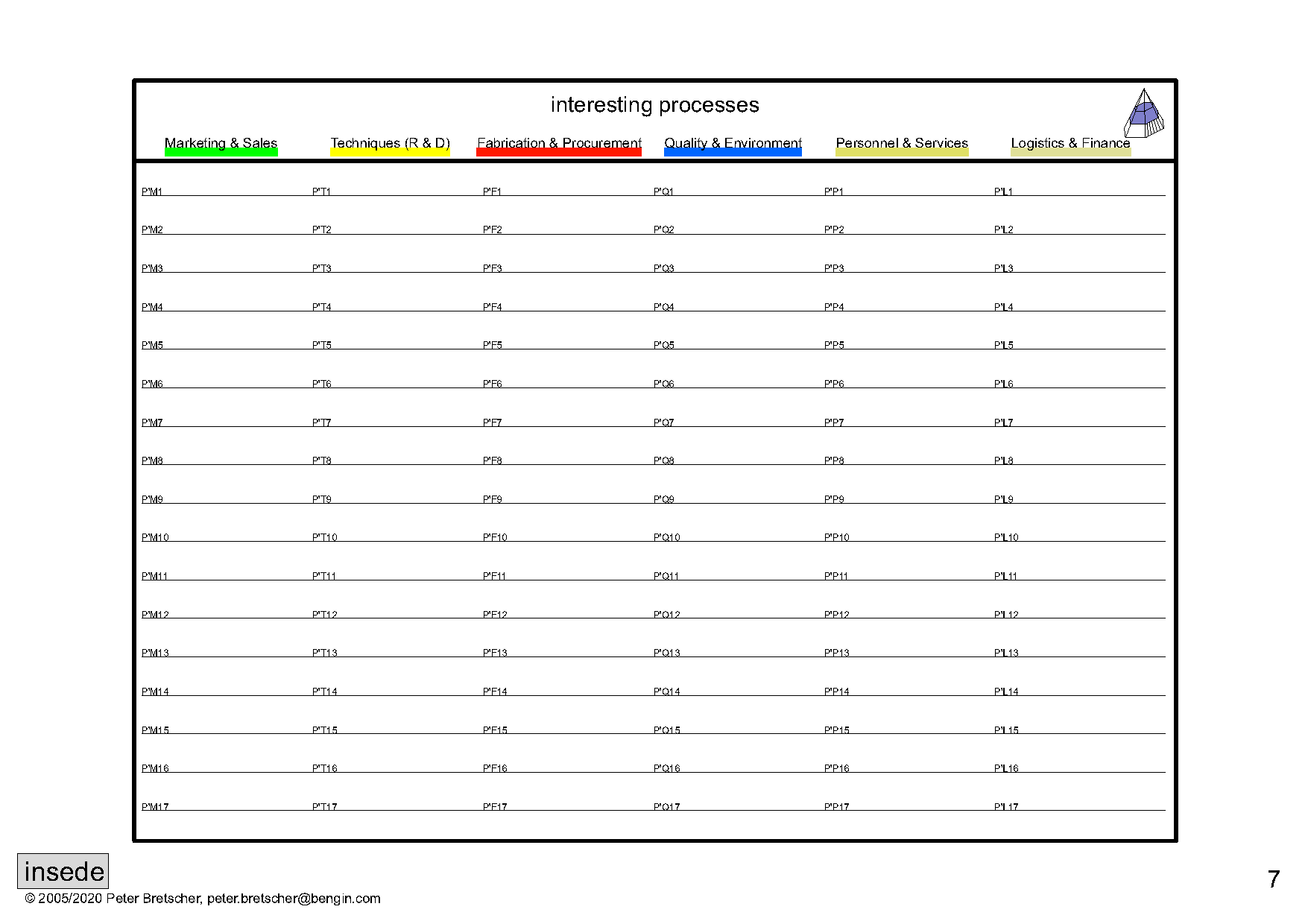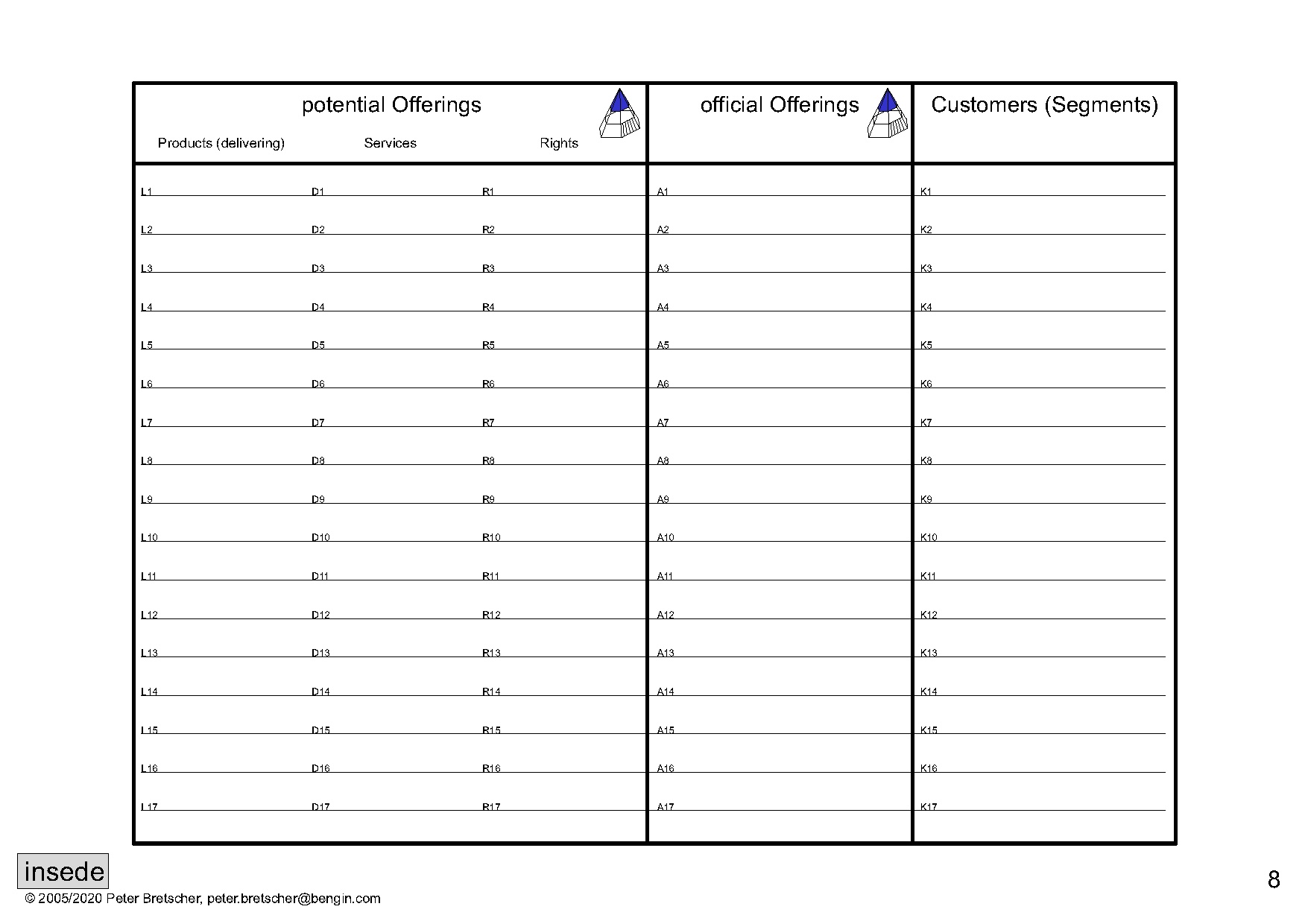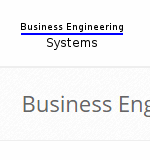As the size of a company increases, it becomes more difficult to have contact with all employees and to get a direct impression of the skills and potential of a company.
Because the potential cannot be read from the usual financial figures, for various reasons, procedures are increasingly being sought and developed with which they can be better recorded and evaluated.
The practitioner does not even have to go so far as to introduce a potential balance sheet or/and an income statement of the potentials - although this would be feasible now.
Ask your controller about the new instruments.
From now on, you and your employees will no longer have to read through 200 or more pages in order to localize the potential in a targeted manner and, based on this, initiate a profit-oriented strategy.
Simply extend the orientation by the available resources and potentials.
Three questions and some structure in the procedure are enough.
- 1. What have we got? What do we have?
- 2. Who could benefit from that?
- 3. Is the work worth doing?
In the following pictures such a procedure is shown in a concentrated form.
That's all it takes.
The PDF of the presentations can be downloaded HERE.
In PDF format it is possible to enlarge the sometimes quite small fonts with the built-in magnifying glass and view the details.
These illustrations are part of the business engineering systems. The systems and their parts are protected by copyright. Registered Copyright TXu 512 154.
Inexpensive licenses are available for commercial use and the development of derivative works.
Licenses are the fastest, safest and cheapest way to benefit from our developments in new economic models and strategies.
Go to Models (opens new page)
Controllers map in 3D

Identify the existing potential and its interrelationships. That which is not (yet) shown in the classical models.
Go to Models (opens new page)
Enterprise model

Make your individual, correct three-dimensional company model with the three levels:
Offers, processes, resources




